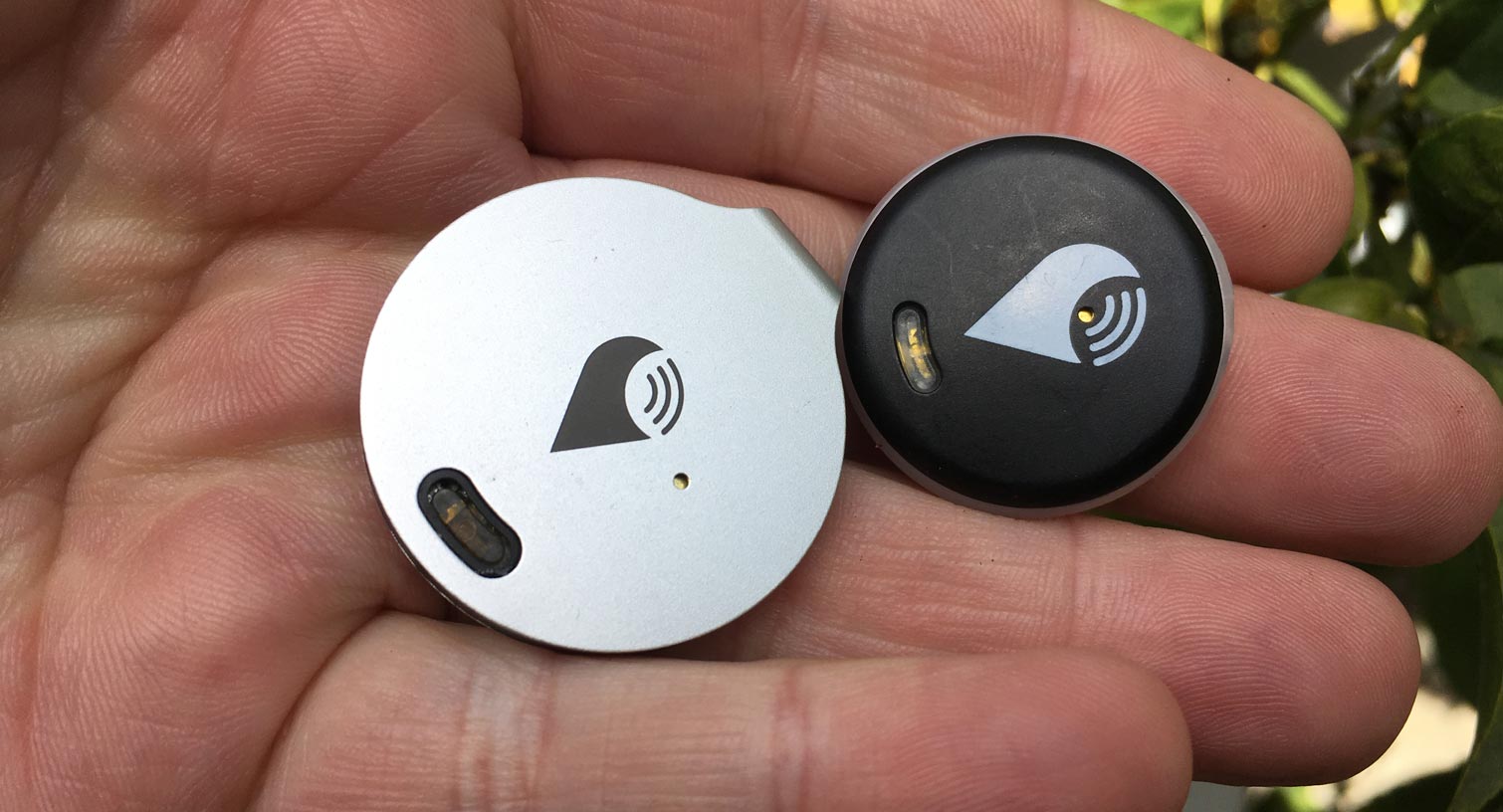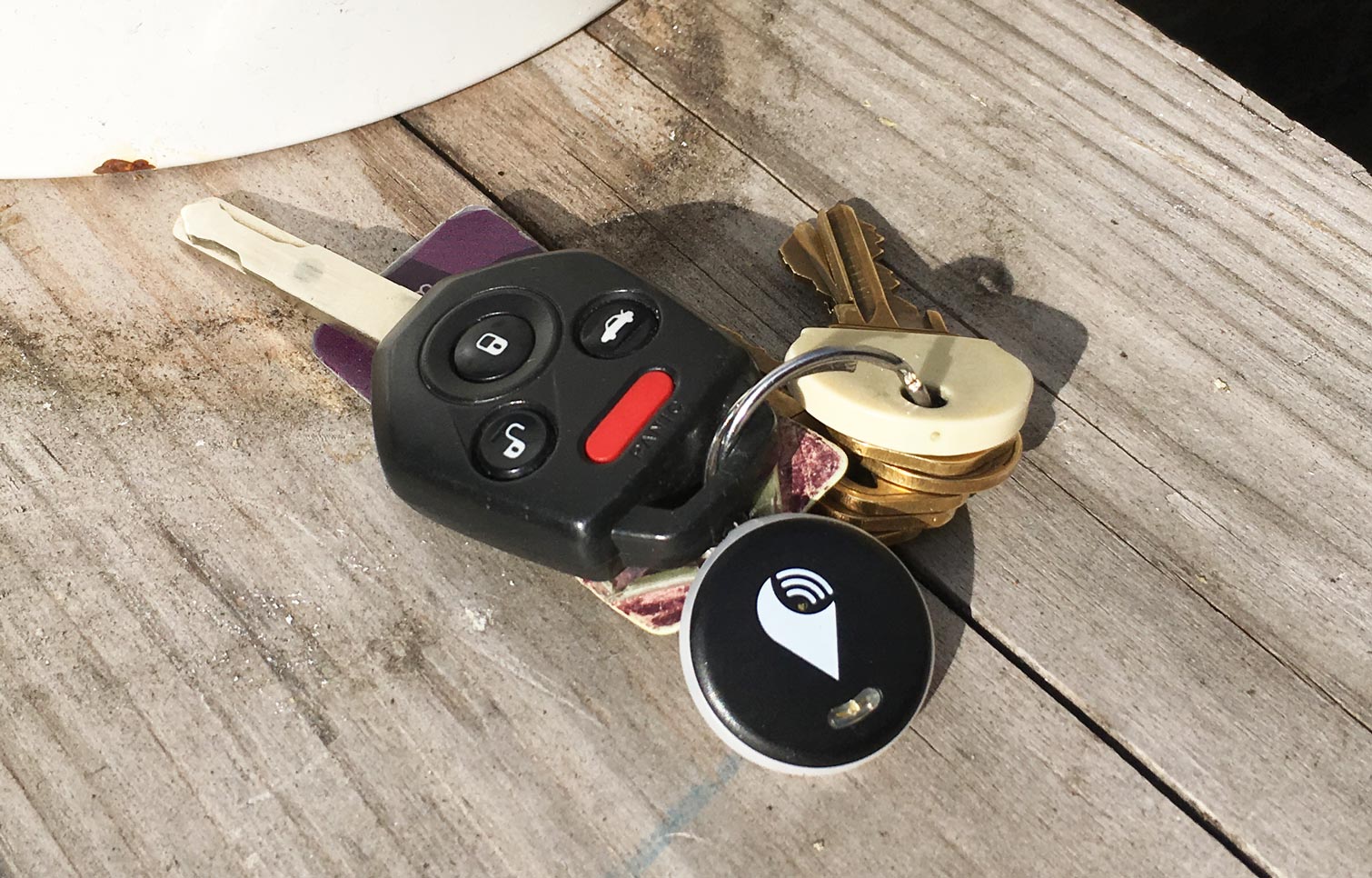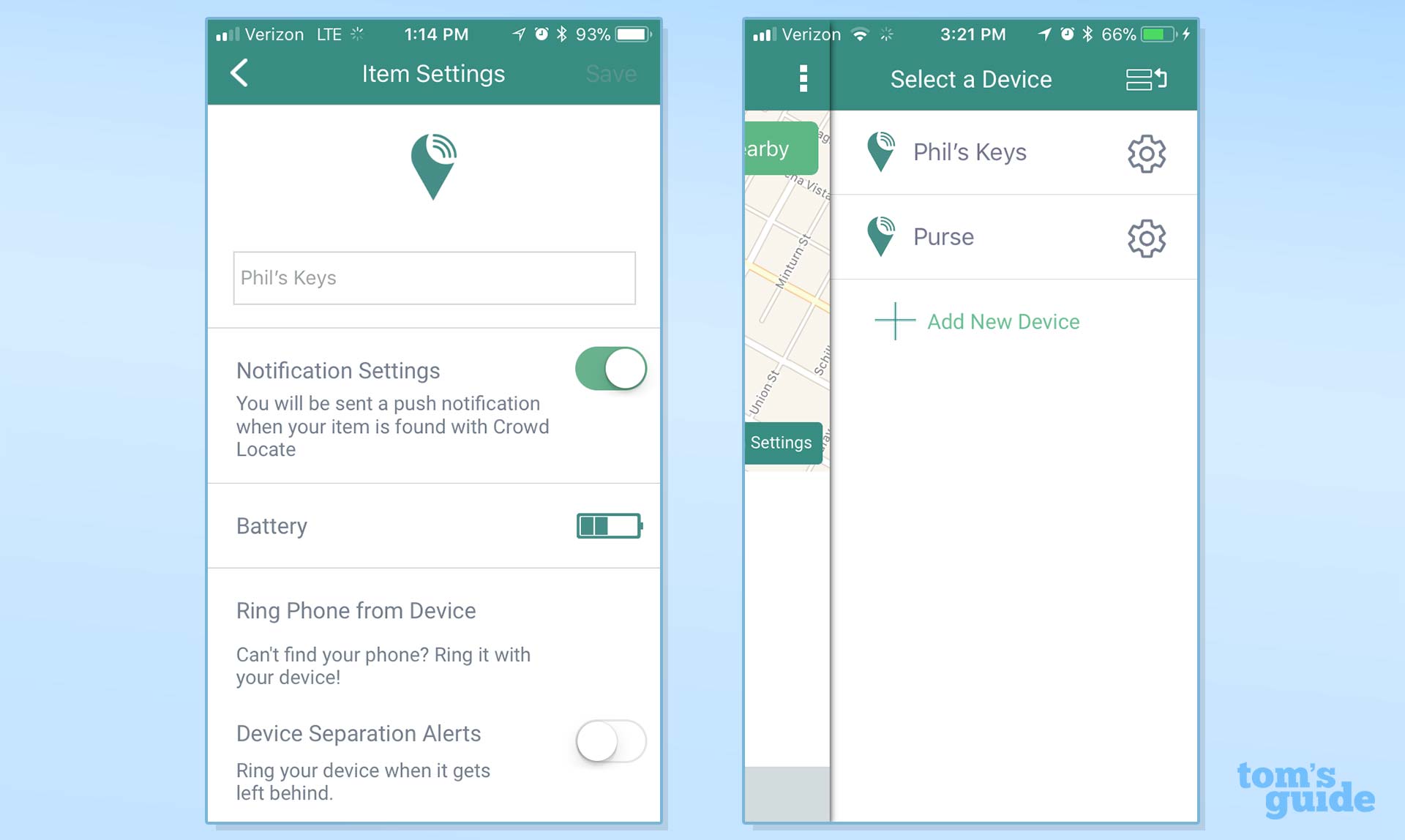Tom's Guide Verdict
Much like the larger TrackR Bravo, the compact TrackR Pixel helps you locate your missing keys, adding a flashing LED light to aid in the search.
Pros
- +
Compact size
- +
Flashing LED lights help you find your keys
- +
Audible alarm
Cons
- -
Inconsistent performance, particularly with geofencing feature
- -
Battery is hard to replace
Why you can trust Tom's Guide
The TrackR Pixel ($24.99) takes TrackR's $29.95 Bravo key finder and shrinks it down into a more compact package. But while the Pixel may have shed a fraction of an inch in diameter, it doesn't lose any capabilities in the process.
You still get a good alarm for locating your keys and a handy, two-way find feature that can locate a misplaced phone, but inconsistent performance keeps this tracker from being a top pick.
What's New with the TrackR Pixel

The Pixel retains the Bravo's coin-size shape. But if the Bravo is about the size of a quarter, the Pixel is closer in size to a nickel. It's also a little bit thicker than the Bravo, at 0.22 inches thick versus 0.14 inches for its older sibling.
| Model | TrackR Bravo | TrackR Pixel |
| Size | 1.2 inches in diameter, 0.14 inches thick | 1 inch in diameter, 0.22 inches thick |
| Listed Range | Up to 100 feet | Up to 100 feet |
| Tested Range | 60-70 feet | 40-50 feet |
| Loudness Claimed | 82 decibels | 90 decibles |
| Compatibility | Android, iOS | Android, iOS |
| Battery | CR1620 | CR2016 |
| Colors | Black, Silver, Rose Gold, Blue | Black, White, Gray, Green, Aqua, Blue, Pink, Red |
TrackR made good use of the extra thickness. LED lights encircle the Pixel and light up when you try to locate the key finder from the companion app on your Android or iOS device. The entire Pixel lights up and flashes, making it easier to spot in a darkened room than the Bravo, which just has a single LED light on its surface.
Replaceable Battery Is A Challenge
TrackR made one sacrifice in the name of shrinking down the Pixel to its 1-inch-diameter size, and that's with how you replace the battery. A swinging arm on the TrackR Bravo pops out of the Bravo when you want to replace its CR1620 battery — a pretty easy process.

There's nothing easy about swapping out the CR2016 battery inside the TrackR Pixel, though. To make the change, you hold the Pixel face down and flat in one hand, then press down with the other hand and twist left. That loosens the back panel, though you won't hear any clicking noise to clue you in that you've been successful. If you're like me, you will inadvertently activate the Pixel's two-way finding feature that sounds an alarm on your phone, which is triggered by pressing down on the Pixel.
MORE: Best and Worst Wireless Key Finders
Get instant access to breaking news, the hottest reviews, great deals and helpful tips.
While you may only need to change the battery on your Pixel a couple times a year, one of TrackR's major selling points over the key finders made by Tile is that you can replace the batteries on TrackR's devices. But if that process isn't easy, — and I can assure you that it is not on the Pixel — and if you're the least bit arthritic, that negates one of TrackR's big edges.
How the TrackR Pixel Performs
TrackR says the Pixel can stay connected to your phone over Bluetooth up to 100 feet. In practice, though, the range is much shorter than the maximum promised by the company, as it is for most Bluetooth key finders. When I took a TrackR Pixel out to a public park, I was able to keep a connection for an average of 42 feet, with the longest range topping out at 54 feet. That's 15 to 20 feet shy of what the TrackR Bravo provides at its best.

And that's just one of the Pixels I tested. On a second model, the connection typically dropped after 30 feet. And that suggests the TrackR Pixel is subject to the same problem I've run into testing various TrackR Bravos over the years — performance can vary widely from device to device. That may help explain the wide range of opinion about the TrackR Pixel at Amazon, where customer reviews average out to a rating of 3.4 stars out of 5.

The TrackR Pixel also has some difficulty re-establishing a connection with your phone once you move back in range. Most of the time, I was able to reconnect with the key finder within 5 to 10 feet of losing the signal. Sometimes, though, it took me closer to 20 feet to reconnect with the Pixel.
Speaking of inconsistency, the Pixel's digital-leash feature could use some fine tuning. With this geofencing feature enabled — which takes some digging into the app's settings — you're supposed to get alerts, should you and your keys become separated. There's a delay, though, between when you lose contact with your keys and when the notification reaches your phone. Often, I was 80 to 90 feet away when the alert appeared. On more than one occasion, I never got an on-screen notification; instead, I could hear the alarm on the sensor attached to my keys from dozens of feet away.

That's the good news about the Pixel: it's got a very loud alarm. The spec sheet claims that it's 90 decibels, making it slightly louder than the TrackR Bravo. My ears aren't refined enough to notice a difference, though I was able to hear the Pixel's alarm, whether the tracker was 40 feet away in a public park or buried under a pile of laundry in my bedroom.
As noted above, the Pixel has a handy two-way find feature for when you've misplaced your phone. Press the Pixel and a nice, loud alarm will sound from your phone, even if you have the device muted.
Bottom Line
In some ways, the Pixel is an improvement upon TrackR's Bravo. Its smaller size makes it less obtrusive, and the ring of LED lights helps you find your keys more easily. But the Pixel also repeats some of the mistakes of the Bravo — chiefly performance inconsistencies. And man, is that battery frustrating to replace.
Tile's trackers — both the stylish Tile Sport and Tile Pro as well as the less expensive Tile Mate — offer a more consistent experience than what you get from the TrackR Pixel. But the fact that you can't replace the battery in any of Tile's key finders — which means you have to upgrade to a new device each year — is a deal breaker for some people. If that includes you, TrackR's family of key finders is your best alternative, and the Pixel's bright LED lights and compact size add to its appeal.
Credit: Philip Michaels/Tom's Guide
Philip Michaels is a Managing Editor at Tom's Guide. He's been covering personal technology since 1999 and was in the building when Steve Jobs showed off the iPhone for the first time. He's been evaluating smartphones since that first iPhone debuted in 2007, and he's been following phone carriers and smartphone plans since 2015. He has strong opinions about Apple, the Oakland Athletics, old movies and proper butchery techniques. Follow him at @PhilipMichaels.

